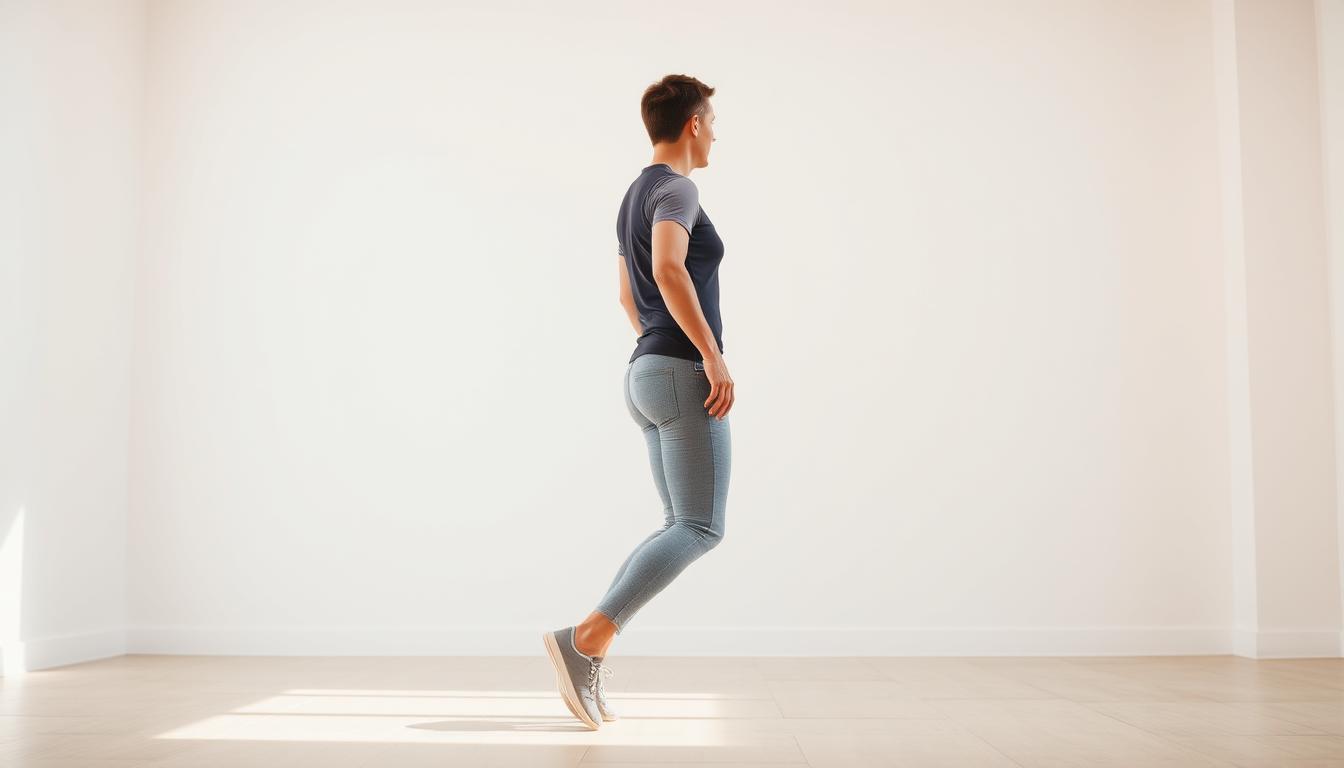Introduction:
Walking is more than just a form of exercise—it's a sustainable habit that can transform your physical health and mental clarity. Health authorities recommend at least 30 minutes of walking per day, five days a week, for a total of 150 minutes. This simple routine can significantly reduce the risk of heart disease, stroke, and diabetes while boosting your energy levels.
Starting small is key. Begin with 15-minute walks and gradually increase your duration and pace. Proper walking shoes and maintaining good posture are essential for a safe and effective routine. Remember, consistency is more important than intensity, especially in the beginning.
Stay motivated by incorporating walking into your daily activities, like during breaks at work or by inviting a friend to join you. Over time, you'll find that walking becomes a enjoyable and integral part of your daily life.
Key Takeaways
- Aim for at least 30 minutes of walking daily, five days a week.
- Start with short, manageable walks and gradually increase your duration.
- Wear proper walking shoes and maintain good posture.
- Incorporate walking into your daily routine for consistency.
- Find a walking buddy to stay motivated and accountable.
Getting Ready to Start Walking
Before you lace up your shoes, preparing properly is important to ensure a safe and enjoyable experience. Assessing your current activity level is the first step in creating a personalized walking plan.
Assessing Your Current Activity Level
Start by tracking your daily steps or the duration of your walks over a few days. This will give you a clear picture of where you stand. You can use a pedometer, a fitness app, or even a simple journal to log your activity. Understanding your starting point helps you set realistic goals and track your progress.
Also, take note of any physical constraints that might impact your walking routine. For example, if you have any health conditions or mobility issues, consult with a healthcare professional to ensure your walking plan is safe and suitable for your needs.
Choosing the Right Gear and Clothing
The right gear can make a big difference in your walking experience. Invest in a good pair of walking shoes that provide adequate support and cushioning. Look for shoes designed specifically for walking to help reduce the risk of foot pain or injury.
Choose flexible, breathable clothing that allows for a full range of motion. Dress in layers to adapt to changing weather conditions—lightweight fabrics for warmer days and insulating layers for cooler weather. This will help you stay comfortable no matter the season.
Remember, proper preparation is key to a successful walking routine. By assessing your activity level and selecting the right gear, you'll be well on your way to a safe and enjoyable walking experience.
Understanding Proper Walking Technique and Posture
Proper walking technique and posture are essential for a safe and effective walking routine. They enhance your comfort, reduce the risk of injuries, and improve overall efficiency.
Warm-Up and Cool-Down Strategies
A proper warm-up is crucial before increasing your walking pace. Start with a slow, 2-3 minute walk to get your muscles ready. This helps prevent sudden strain and prepares your heart rate for the exercise. After your walk, cool down with stretching exercises to promote recovery and reduce muscle stiffness.
Key Posture Tips for a Safe Walk
Maintaining good posture during your walk is vital. Keep your head straight, shoulders relaxed, and hips aligned. This alignment reduces the risk of back pain and improves breathing efficiency. Engage your core to support your lower back and maintain a heel-to-toe stride to minimize joint stress.
Proper posture can reduce muscle fatigue by 25% and improve circulation by 15%. It also lowers the risk of joint issues by 30% and enhances balance, reducing fall risks by 30% among older adults. By incorporating these techniques, you'll enjoy a more comfortable and beneficial walking experience.
Step-by-Step Guide to Starting a Walking Routine for Beginners
Setting Realistic Walking Goals
Setting realistic goals is crucial when starting your walking routine. Begin with short, manageable walks and gradually increase the duration. For example, start with a 15-minute walk each day and slowly build up to 30 minutes or more as your fitness level improves.
Key Tips for Success:
- Start with a 15-minute walk and gradually increase by 5 minutes each week.
- Track your progress using a pedometer or fitness app to monitor your improvement.
- Celebrate small milestones, like reaching 30 minutes without stopping, to stay motivated.
Remember, consistency is more important than intensity. By setting achievable goals and celebrating your progress, you'll be more likely to stick with your walking routine and enjoy the many health benefits it offers.
Building a Progressive Walking Schedule
A well-structured walking plan is essential for building endurance and reducing the risk of injury. By gradually increasing your walking time and incorporating rest days, you can create a sustainable routine that keeps you motivated and engaged.
Week 1: Establishing the Habit
Start with short, 10-to 15-minute walks each day. Consistency is key during this initial phase. Even brief walks can have a significant impact on your health, improving your mood and energy levels while setting the foundation for a lasting habit.
Gradual Increases and Rest Days
Add 5 minutes to your daily walks each week. For example, after Week 1, aim for 20-minute walks. Rest days are crucial for recovery and should be scheduled every few days. You can use light stretching or yoga to keep your body active without overexertion.
- Monday: 15-minute walk
- Tuesday: Rest or cross-training
- Wednesday: 20-minute walk
- Thursday: Rest or cross-training
- Friday: 25-minute walk
- Saturday: Rest or cross-training
- Sunday: 30-minute walk
Remember, it's okay to repeat a week if you need more time to adjust. The goal is to progress at a comfortable pace, ensuring your walking routine remains enjoyable and sustainable.
Incorporating Intensity and Interval Training
Once you've established a steady walking routine, it's time to take it to the next level with interval training. This technique involves short bursts of higher intensity walking followed by recovery periods. Not only does it make your walks more engaging, but it also boosts cardiovascular benefits.
How to Add Intensity: Start by incorporating 30-second bursts of brisk walking into your routine, followed by 2-3 minutes of walking at your normal pace. For example, after a 5-minute warm-up, alternate between fast and moderate walking for 15 minutes, then cool down with 5 minutes of stretching.
Interval training offers numerous benefits. It can improve heart health by increasing your heart rate and enhancing cardiovascular fitness. Additionally, it can boost metabolism, helping your body burn calories even after your walk is finished.
When to Increase Intensity: Gradually increase your walking speed and duration over time. For instance, add 5 minutes to your walk each week. It's essential to listen to your body. If you experience dizziness or extreme fatigue, it's a sign to slow down and allow your body to recover.
Consistency is key. Aim to incorporate interval training 2-3 times a week, allowing rest days in between. You can also invite a friend to join you for added motivation. Remember, celebrating small milestones will keep you motivated and committed to your walking routine.
Tips for Staying Motivated and Creating a Walking Habit
Maintaining motivation is the cornerstone of a successful walking routine. Consistency is key, and several strategies can help you stay on track and make walking a lasting habit.
Tracking Progress and Celebrating Milestones
Monitoring your progress is a powerful motivator. Use a step counter or log your daily walking minutes to see how far you've come. Wearable devices and apps can track both steps and your pace, heart rate, and distance, giving you a comprehensive view of your improvement over time.
Celebrating small victories can significantly boost your motivation. For instance, treating yourself to new walking shoes after reaching a 30-minute milestone can be a great incentive. Recognizing these achievements helps build confidence and reinforces the habit.
| Method | Benefits | Tips |
|---|---|---|
| Step Counter | Tracks daily progress visually | Set a daily step goal |
| Walking Apps | Monitors pace and heart rate | Use reminders for consistency |
| Logging Minutes | Simple and effective tracking | Review weekly to set goals |
Walking with a friend can also enhance accountability and make the experience more enjoyable. Stay motivated by sharing goals and celebrating successes together. Remember, every step counts, and consistency will lead to long-term benefits for your health and well-being.
Integrating Your Walking Routine Into Daily Life
Turning your walking routine into a daily habit requires creativity and consistency. You can make it an enjoyable part of your lifestyle by weaving it into your schedule and surroundings.
Making Time for Your Daily Walk
Consistency is key to making walking a habit. Start by setting a specific time each day, such as first thing in the morning or right after dinner. Even 15-20 minutes a day can make a big difference. Use a timer or reminder on your phone to ensure you don't forget. Over time, walking will become second nature over time, just like brushing your teeth or showering.
- Schedule your walk at the same time daily.
- Start with 15-20 minutes and gradually increase.
- Use reminders to stay consistent.
Utilizing Morning Rituals and Social Walks
A morning walk can be a great way to kickstart your day. Research shows that morning walks can boost energy levels and improve focus. Invite a friend or family member to join you for added motivation and social interaction. Walking with others not only makes the time pass more enjoyably but also creates a sense of accountability.
Adapting Your Route and Lifestyle
Varying your walking route can keep your routine fresh and exciting. Explore new neighborhoods, parks, or trails to discover different scenery and challenges. Additionally, adapt your walking routine to fit your lifestyle changes. For example, if you're traveling, find local walking paths or incorporate sightseeing into your walks.
By integrating walking into your daily life, you'll find it easier to maintain consistency and enjoy the many benefits it offers. Remember, every step counts; small changes can lead to big results over time.
Conclusion
Consistency is the cornerstone of a successful walking routine. By starting small and gradually increasing your daily walk time, you can build a habit that transforms your physical health and mental clarity. Remember, every step counts, and even 15-20 minutes a day can significantly improve your fitness and well-being.
Setting realistic goals and tracking your progress is key to staying motivated. Use a step counter or app to monitor your daily walks and celebrate small milestones, like reaching a 30-minute walk without stopping. Proper gear, such as supportive shoes, and maintaining good posture will help you stay comfortable and injury-free.
Integrating walking into your daily routine can be simple. Try scheduling your walk at the same time each day, whether it's first thing in the morning or right after dinner. Exploring new routes or inviting friends to join you can keep your walks fresh and enjoyable. Over time, you'll find that walking becomes an integral part of your lifestyle.
As you continue walking, remember that every step brings you closer to better health. Whether improving your heart rate, boosting your energy levels, or clearing your mind, walking offers countless benefits. Stay consistent, listen to your body, and enjoy the process of becoming a healthier, happier you.
Feel free to share your progress or questions below. Building a community of walkers can provide motivation and support as you continue on your journey to better health. Happy walking!
FAQ
How can I make walking a consistent part of my daily routine?
Start by setting a specific time each day and sticking to it. Whether it’s in the morning or after work, consistency is key. Pairing your walk with a habit you already have, like right after breakfast or right after dinner, can help make it automatic over time.
What’s the best way to track my progress while walking?
Use a fitness tracker or a mobile app to monitor your distance, pace, and time. Many apps also let you set goals and celebrate milestones, which can be motivating. Tracking your progress helps you stay accountable and see how far you’ve come.
How do I know if I’m walking at the right intensity?
Pay attention to your heart rate and how you feel. If you can hold a conversation but feel like you’re working, you’re likely at a good intensity. For brisk walking, aim for a pace where you breathe harder but still comfortable. Remember, it’s about finding a balance that feels right for you.
Can walking improve my heart health?
Absolutely! Regular walking is one of the best physical activities for your heart. It helps lower blood pressure, improves circulation, and strengthens your cardiovascular system. Even a short 10-minute walk a day can make a big difference over time.
How can I stay motivated if I don’t enjoy walking alone?
Invite a friend or family member to join you! Walking with others can make the time pass more enjoyably and help you stay accountable. You can also explore new routes or listen to music, podcasts, or audiobooks to keep your walks engaging.
Is it better to walk longer or faster for better health benefits?
Both have benefits! Longer walks can improve endurance, while faster paces, like brisk walking, can boost your heart rate and burn calories more efficiently. The key is to find a balance that works for you and your fitness goals.
How often should I walk each week for the best results?
Aim for at least 30 minutes per day, five days a week. This aligns with most health guidelines and can lead to noticeable improvements in your fitness and overall well-being. Even shorter walks, like 10-minute walks, can add up and make a difference if done consistently.
What should I wear for a comfortable walking experience?
Choose shoes with good support and cushioning, and wear breathable, moisture-wicking clothing. Dress in layers so you can adjust as your body warms up during your walk. Comfort is key to enjoying your daily walk and sticking with your routine.
Can walking help me manage stress?
Yes, walking is a great way to clear your mind and reduce stress. Being outdoors and moving your body can help you relax and feel more centered. Even a short 10-minute walk can make a big difference in your mental health.
How can I avoid getting bored while walking?
Mix up your route to explore new places, or try interval training by alternating between brisk and regular walking. Listening to music, podcasts, or audiobooks can also make your walks more enjoyable and keep your mind engaged.
Is walking enough exercise to stay healthy?
Walking is an excellent form of physical activity and can be enough to stay healthy if done consistently. It improves cardiovascular health, strengthens muscles, and supports weight management. Pair it with a balanced diet and other activities for overall wellness.
How can I make sure I’m walking safely?
Always be aware of your surroundings, especially if walking in low-light areas. Wear reflective clothing and avoid distractions like using your phone while walking. Staying alert and following traffic rules can help ensure a safe walking experience.
DISCLAIMER
This document is provided for general information purposes only and should not be relied upon as providing legal advice, technical, or specific operational guidance to the reader, whether as to the practices described in the document or the applicable legal requirements and regulations. SAVE ON SNEAKS expressly disclaims any responsibility for liability arising from or related to the use or misuse of any information in this document.









